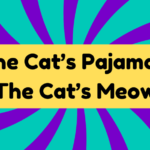The term "copycat" refers to someone who imitates others without adding anything original. Emerging in the late 1800s, it highlights the tension between creativity and imitation. Copycat behavior is often criticized because it undermines true creativity, particularly in art, fashion, and business. For example, if a student mimics another's project instead of coming up with their own ideas, they fall into this trap. Nowadays, with social media, copycat trends are more common, stifling authenticity. Understanding this concept is vital, as it affects not just individuals but entire cultures looking to foster genuine creativity. There's much more to explore on this topic.
Synonyms
When discussing "copycat," you might come across several synonyms that convey similar meanings, such as imitator, mimic, or clone. Each of these terms highlights the tendency of imitation behaviors but often at the cost of originality significance. You might be surprised how often these synonyms pop up in creative fields, where genuine innovation is essential. Consider the following:
- Imitator – Someone who copies another's ideas or actions without adding their flair.
- Mimic – Often used in performing arts, signifies a performer who replicates styles or sounds.
- Clone – In technology, it represents an exact duplicate but lacks unique contributions.
Recognizing these terms can help you better understand the implications of copycat behavior and its impact on creativity.
Example of Sentences
How does copycat behavior manifest in everyday life? It often surfaces in ways that may undermine genuine creativity. You might notice this phenomenon through creative imitation, where individuals or businesses mimic the successful traits of others without adding original value. Here are three common examples:
- A startup accused a competitor of being a copycat for snatching their business model.
- Parents frequently remind their kids to innovate instead of indulging in copycat behaviors.
- A popular fashion brand filed a lawsuit against a retailer for blatant copycat designs.
These situations highlight that while imitation can be flattering, it often leads to accusations of a lack of originality, making it essential to prioritize innovative ideas and solutions.
Origin
The term "copycat" originated as a descriptor for imitation devoid of originality, reflecting a growing concern over plagiarism in the late 1800s. This word carries significant cultural importance, as it underscores the tension between creativity and imitation in various fields. The psychological implications of being labeled a copycat can be profound; it often highlights a lack of innovation and individuality, traits that society increasingly values. Many people may view copycat behavior as a shortcut to success rather than an authentic path to creativity. Recognizing the negative connotation of this term encourages you to embrace originality and avoid merely replicating others' ideas. In a world that thrives on fresh concepts, being a true innovator is essential for genuine impact.
Collocations
Collocations related to the term "copycat" highlight its usage in both casual and formal contexts. When discussing copycat behavior, you might encounter phrases that emphasize both creative imitation and its negative aspects. Here are three notable collocations:
- Copycat behavior – Often used to describe someone mimicking another's actions without originality.
- Copycat designs – Frequently referenced in discussions about fashion or art, indicating a lack of unique creativity.
- Cultural plagiarism – This term criticizes imitative practices that ignore original creators and their intellectual property.
Using these collocations can help frame discussions around innovation, shedding light on the fine line between inspiration and imitation. It's essential to value originality and be wary of falling into copycat tendencies, especially in a culture that can reward such behavior.
How to Use in Everyday Language
In casual conversations, you might refer to someone as a "copycat" when they mimic another person's style or ideas without adding anything new. This term often highlights copycat behavior that stifles originality and innovation. Notice how cultural imitation can lead to trends that prioritize imitation over creative thought; it's a slippery slope. For instance, if you see a friend always replicating an influencer's posts without their unique twist, it raises questions about their creativity. While borrowing ideas is common, true innovation comes from personal expression. You should encourage originality in yourself and others to foster a vibrant environment where unique voices shine rather than being overshadowed by mere copycats. Embrace creativity and challenge the common patterns of imitation!
Why Is It Still Relevant Today?
Copycat behavior remains increasingly relevant in today's fast-paced world, where trends can spread like wildfire across social media. This mirroring often stifles true creativity, raising concerns about cultural relevance and originality. In a society that values innovation, relying on imitation can lead to a homogeneous landscape, where unique ideas fade away. You might notice how societal behavior shifts, as people emulate what's popular, risking the authenticity of their own voice. While it's tempting to jump on the bandwagon, fostering originality is essential for progress. Encouraging fresh perspectives helps us break free from the cycle of copycat behavior, allowing genuine creativity to flourish. If we want to shape a vibrant future, embracing originality is key to maintaining our cultural integrity.







